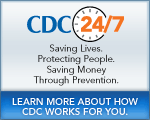Using Antiviral Medications to Control Influenza Outbreaks in Institutions
Use of antiviral drugs for treatment and chemoprophylaxis of influenza is a key component of influenza outbreak control in institutions that house patients at higher risk for influenza complications. In addition to antiviral medications, other outbreak-control measures include instituting droplet and contact precautions and establishing cohorts of patients with confirmed or suspected influenza, re-offering influenza vaccination (if available) to unvaccinated staff and patients, restricting staff movement between wards or buildings, and restricting contact between ill staff or visitors and patients. Both adamantanes and neuraminidase inhibitors have been used successfully to control outbreaks caused by susceptible strains when antiviral medications are combined with other infection-control measures.
Persons who are candidates for chemoprophylaxis should be provided with medications most likely to be effective against the influenza virus that is the cause of the outbreak, if known. Respiratory specimens should be obtained from ill persons during institutional outbreaks and sent for testing to determine the virus type or subtype of influenza A virus associated with the outbreak and to guide antiviral therapy decisions. Persons whose need for chemoprophylaxis is attributed to potential exposure to a person with laboratory-confirmed 2009 H1N1, influenza A (H3N2), or influenza B should receive oseltamivir or zanamivir. Zanamivir should be used when persons require chemoprophylaxis as a result of exposure to influenza virus strains that are suspected of being oseltamivir-resistant.
When chemoprophylaxis is indicated, a neuraminidase inhibitor medication should be started as early as possible to reduce the spread of the virus. In these situations, having preapproved orders from physicians or plans to obtain orders for antiviral medications on short notice can substantially expedite administration of antiviral medications. Specimens should be collected from ill persons for influenza typing, influenza A virus subtyping, or viral culture to assess antiviral resistance and provide data on the outbreak etiology. Chemoprophylaxis should be administered to all eligible residents, regardless of whether they received influenza vaccination during the previous fall, and should continue for a minimum of 2 weeks. If surveillance indicates that new cases continue to occur, chemoprophylaxis should be continued until approximately 10 days after illness onset in the last patient. During institutional outbreaks, chemoprophylaxis also can be offered to unvaccinated staff members who provide care to persons at high risk of complications. Chemoprophylaxis should be considered for all employees, regardless of their influenza vaccination status, if indications exist that the outbreak is caused by a strain of influenza virus that is not well matched by the vaccine. Such indications might include multiple documented breakthrough influenza-virus infections among vaccinated persons who otherwise would be expected to respond to vaccination, studies indicating low vaccine effectiveness, or circulation in the surrounding community of suspected index case(s) of strains not contained in the vaccine.
To limit the potential transmission of antiviral drug-resistant influenza virus during outbreaks in institutions, whether in chronic or acute-care settings or other closed settings, measures should be taken to reduce contact between persons taking antiviral drugs for treatment and other persons, including those taking chemoprophylaxis. Guidelines recently published by IDSA provide a summary of the prevention and management of influenza outbreaks in institutional settings.
NOTE: The text above is taken from Antiviral Agents for the Treatment and Chemoprophylaxis of Influenza - Recommendations of the Advisory Committee on Immunization Practices (ACIP) 2010. MMWR 2011 Jan 21; 60(RR01):1-24. (Also available as PDF [1 MB, 28 pages] ).
Contact Us:
- Centers for Disease Control and Prevention
1600 Clifton Rd
Atlanta, GA 30333 - 800-CDC-INFO
(800-232-4636)
TTY: (888) 232-6348 - Contact CDC-INFO



